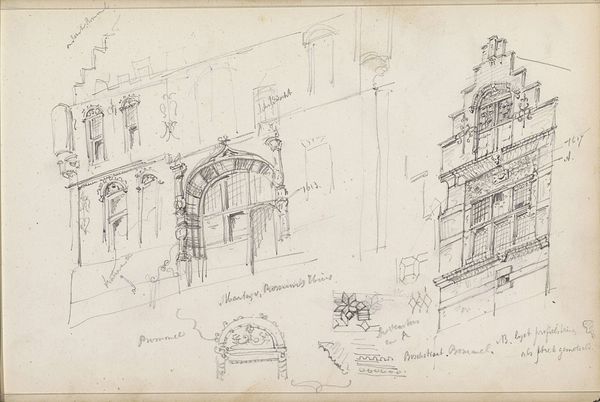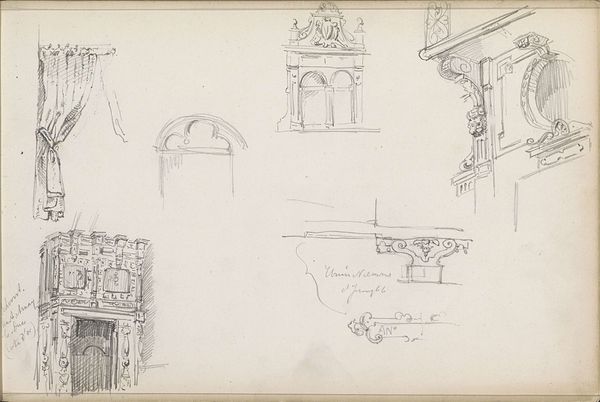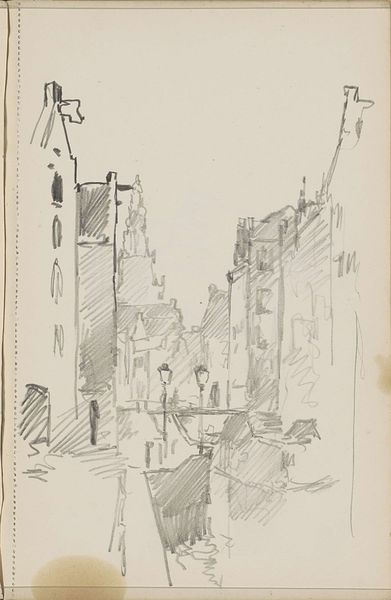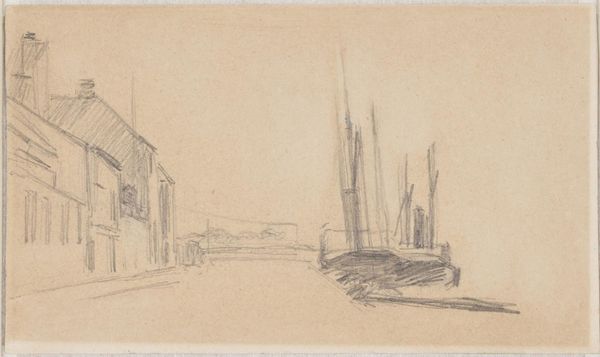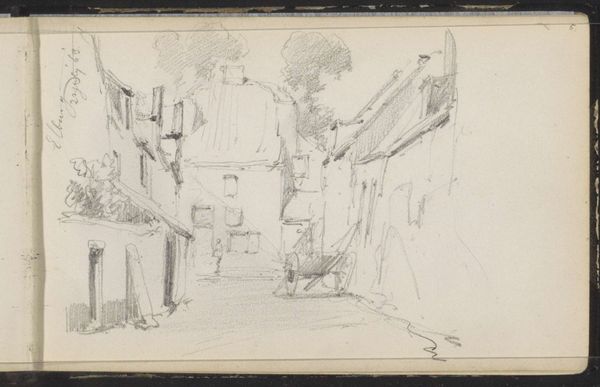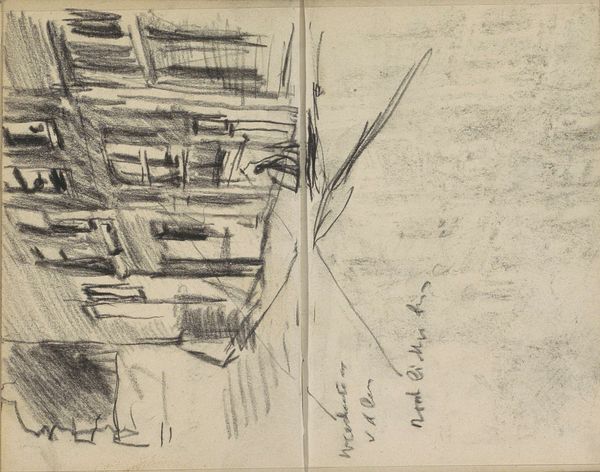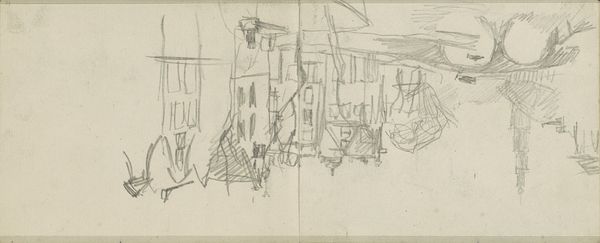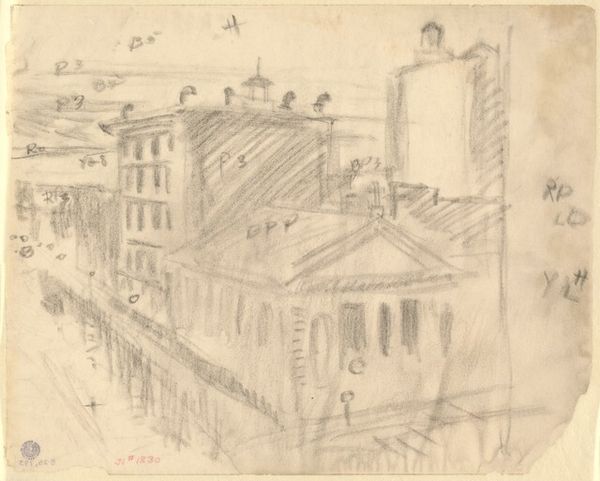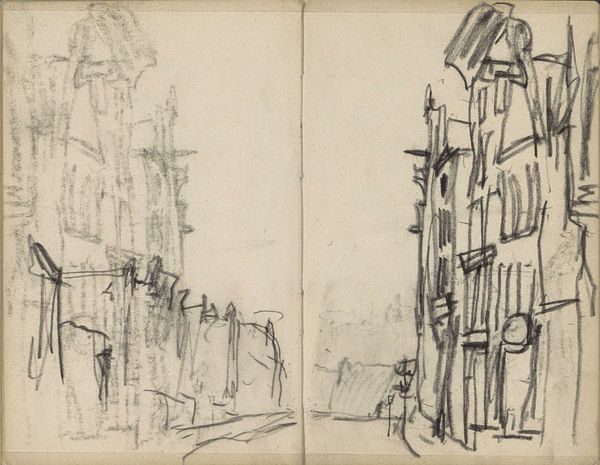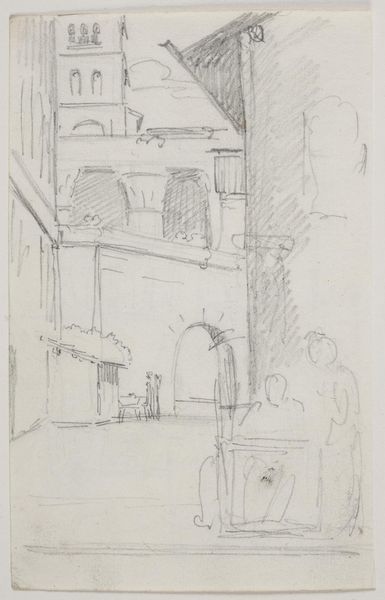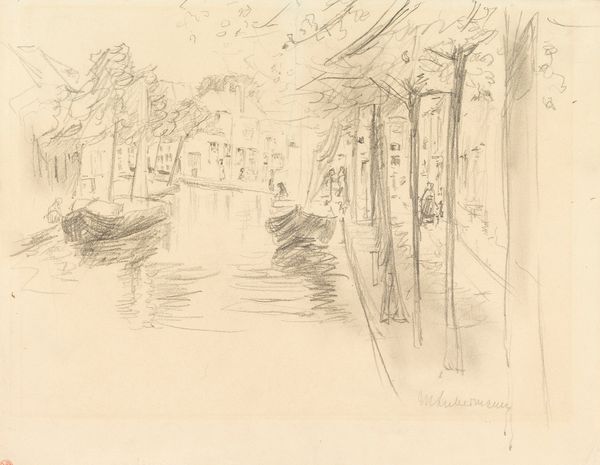
Dimensions: height 210 mm, width 235 mm
Copyright: Rijks Museum: Open Domain
Curator: This is Willem Witsen's "Details van gebouwen aan het Canal Grande te Venetië," a drawing executed circa 1914 to 1919. Editor: It feels very immediate, a quick study. The lightness of touch, the unfinished quality—it captures a certain ephemeral atmosphere, like a memory fading at the edges. Curator: Indeed, it’s primarily a study of form. Note the artist's skillful use of line to define space and volume, especially the subtle gradations achieved with pencil and ink. The various architectural elements—the arches, windows, and reflections on the water—are reduced to their essential geometry. Editor: But it's also undeniably a record of its time. Venice itself was undergoing significant change then. Witsen, entrenched within the Dutch cultural elite and exposed to a growing fascination for international venues and topics, has rendered this quick cityscape. We’re presented with Venice through the social lens of an early 20th-century artist in pursuit of fresh, contemporary perspectives. Curator: Yes, while history informs our understanding, observe how the repetitive vertical lines used to define depth also create a distinctive surface pattern. These aren’t just representations of buildings; they become elements in a larger abstract design. Witsen balances representation with formal considerations, resulting in a tension between the tangible and the abstract. Editor: Do you feel the social context is pertinent here, though? Witsen’s upper-class upbringing enabled his prolonged stays in cities like Venice. He, amongst many others, contributed to its rise as a hub for art, while shaping our perception of it. Curator: An intriguing point. But from a purely visual perspective, I am fascinated by how the sketches create such dynamism without fully resolving any single element. There is a tension that makes the viewing experience perpetually engaging. Editor: So ultimately, is it Venice’s narrative, or our aesthetic perception, that lends the art historical significance here? Perhaps a blending of both. Curator: A fitting observation! Thank you.
Comments
No comments
Be the first to comment and join the conversation on the ultimate creative platform.
